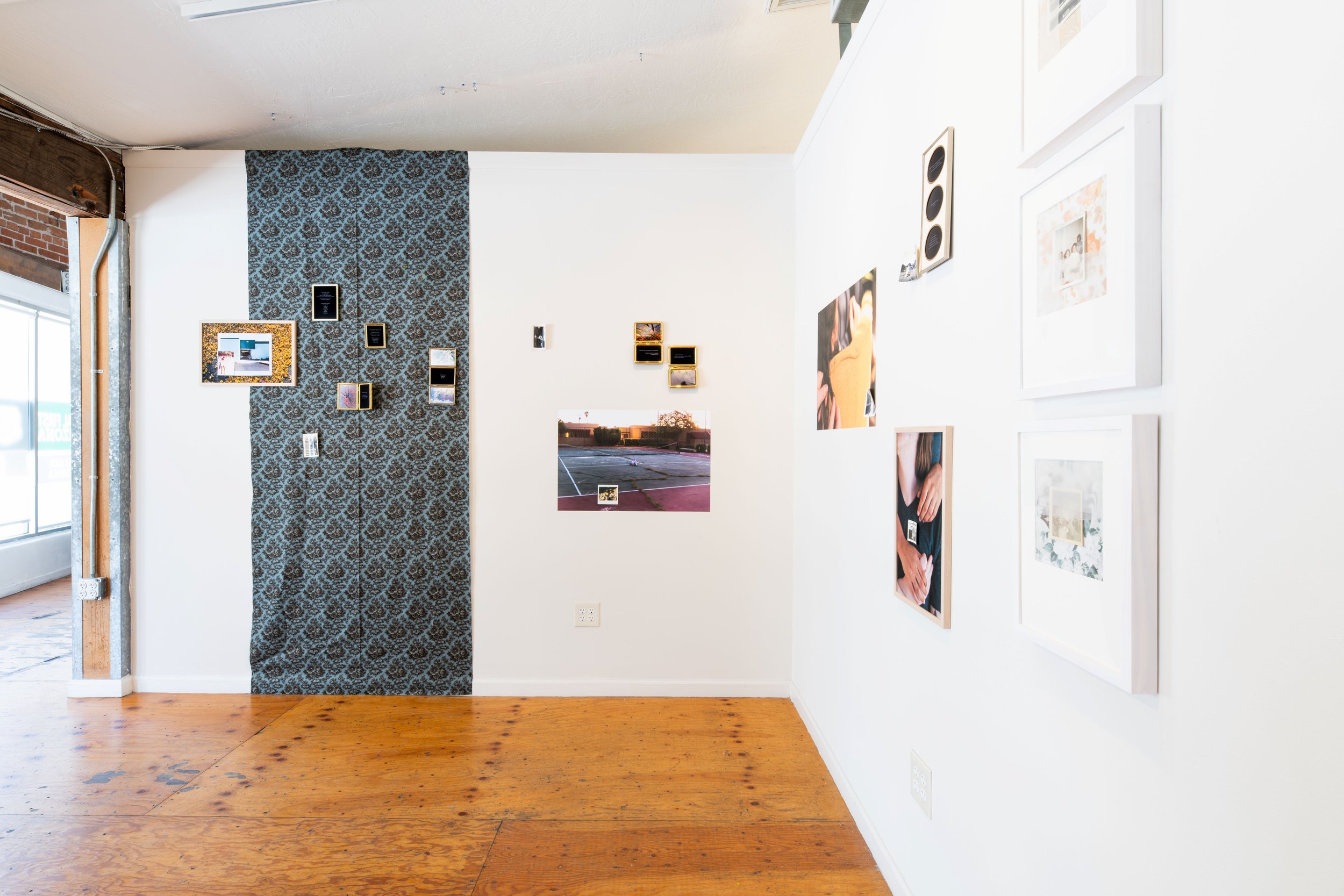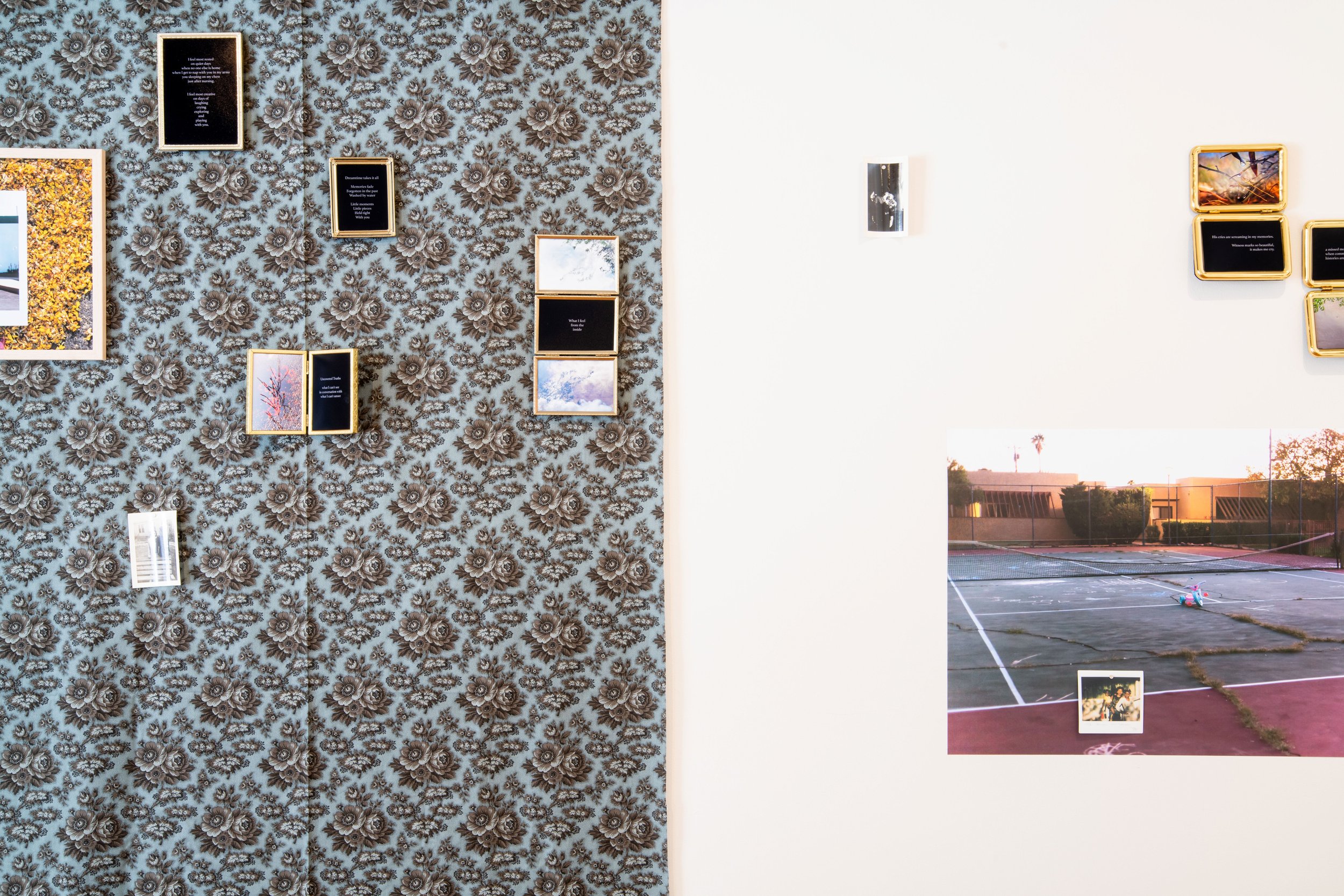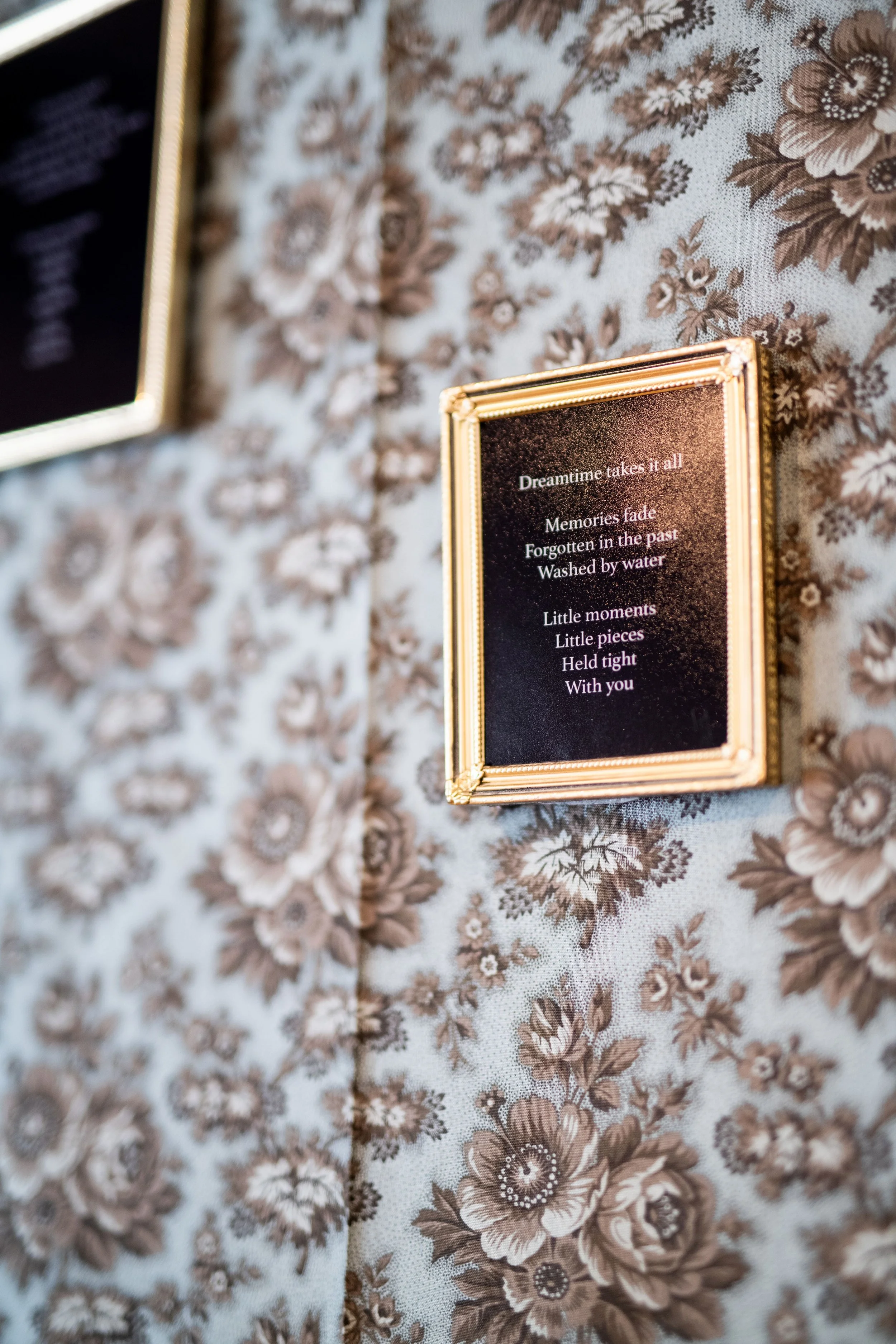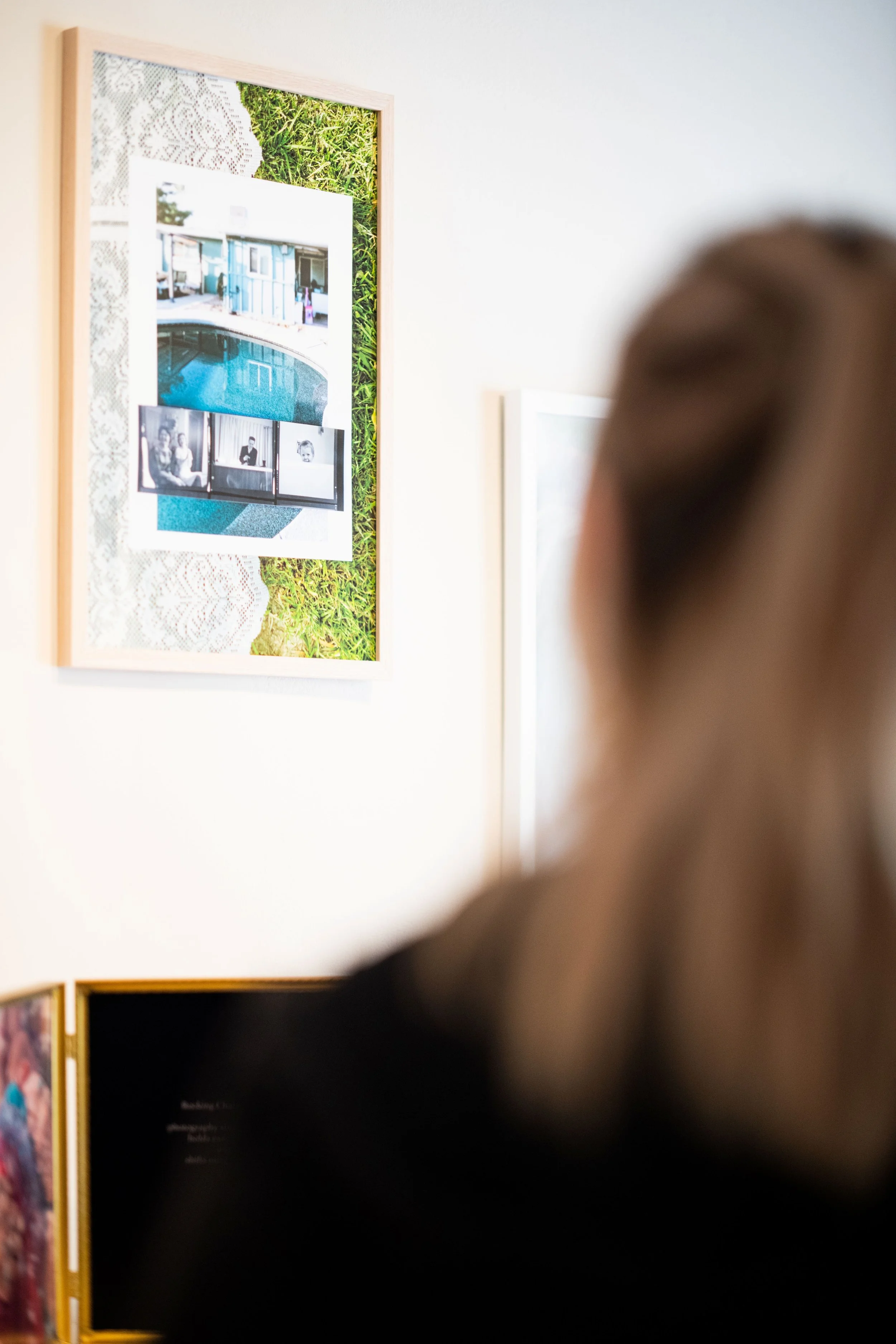Methods for Finding Your Way Home
Artists Megan Driving Hawk and Kat Davis Teach Us How to Trace Our Memories Backward and Forward




This is the second article on the two-person exhibition, Finding Home. Read the first here.
Installation photos throughout courtesy Josh Loeser.
Gilded frames, a mustard yellow chair, the glow of a range hood light in the evening, the shine of golden blonde hair, and a nest of Palo Verde flowers. The spattering of yellow carries you through the fragmented images of the main gallery space as you explore the two-person exhibition, Finding Home.
The experience is reminiscent of trying to recall your early childhood as an exercise. No single event in mind, you catch a spattering of colors, rooms from odd angles, skies from arcing swings. You begin to notice a throughline between images that were years, even worlds, apart. Maybe it’s a color. It may be a feeling or a person. It may be some inexplicable connective tissue, a mystery to unravel. Artists Megan Driving Hawk and Kat Davis investigate those connective tissues.
Their work is quick to remind us that memory is a constructive process. Rather than digging through the archives and pulling out intact images of moments past, the act of remembering involves piecing scenes back together, often with blurred or completely fabricated details tinged with the present moment. Both artists assemble memories with pieces of the present and ideas of the future. Their methods differ, even as they share the walls, their pieces intermingled and unlabeled.
Moments Collide through Double Exposure
Driving Hawk's images gravitate to the earthen. The family photos you'd expect from thrifted frames that almost certainly once filled the hallways of grandparents are replaced by scenes of nature. The artist mentioned that memories of her childhood were largely scattered images of the outdoors, where she felt most safe and free. No wonder, then, the impulse to coalesce memories and feelings--really, the entire substance of her childhood--around these sacred groves. No wonder, then, the impulse to plant the seeds of her children's lives in this fertile ground.
The artist's photographic works are double exposures. This technique involves using the same frames of the film rolls when snapping pictures. It happens when you forget to wind after you take a picture, but film photographers intentionally use double exposures to layer images. When they develop their film, two pictures share the same space, creating a conversation between them. This process is also replicated digitally to maintain the effect with more control. By layering images of her son and home with leaves, trees, and the like, Driving Hawk embeds nature within the very image and identity of her growing son. The artist then binds the work together through her poetry, incantations like magic, prayers, and confessions. The verses act as both annotation and images in their own right, situated as they are in frames.
Moments Converse within Shared Frames
Davis layers photos in a more physical, almost scrapbooking way. The artist layers their images with photos found in vintage and antique stores. They’re often black and white, faded with age, and always without context, not even names. These forgotten moments get to be rediscovered, and like nests, Davis’s own photography gives these found photos a new home with new contexts.
Interestingly, when we are given images to view, we are often left to wonder who these people were. We give stories and narratives to figure out what the artist is trying to tell us. Here, the artist puts themselves in this place. And the way that the artist reinvents the photographs they’re given without regard for the photos’ actual history is instructive. Try as we may to figure out what’s happening, we as viewers end up fictionalizing. And that’s okay. Only if the artist tells us everything there is to know can we be certain, but this is photojournalism. We put the images we are given within our own contexts. Our personal histories are the basis for understanding the art we are presented. We make connections based on what we know. Further, after we encounter images that strike us, we will inevitably see something in the future that will connect back to them.
Memory-Mapping Charts Our Way Home
And so we go on, collecting images and collecting moments, like Kat Davis digging through the local antique store. We mix them, like Megan Driving Hawk double-exposing her images, though we may not be as intentional. Through their memory-mapping, we begin to understand how memories are manufactured. That’s not to say that the memories we hold so dear are myths or lies. But they become what we need them to be to reinforce our personal story. Whether we reframe these memories based on where we are today, whether we embellish and add minor details that explain this or that present circumstance, whether we tint the memory with sadness or anger, they are just as true to who we are as people, the facts be damned.











